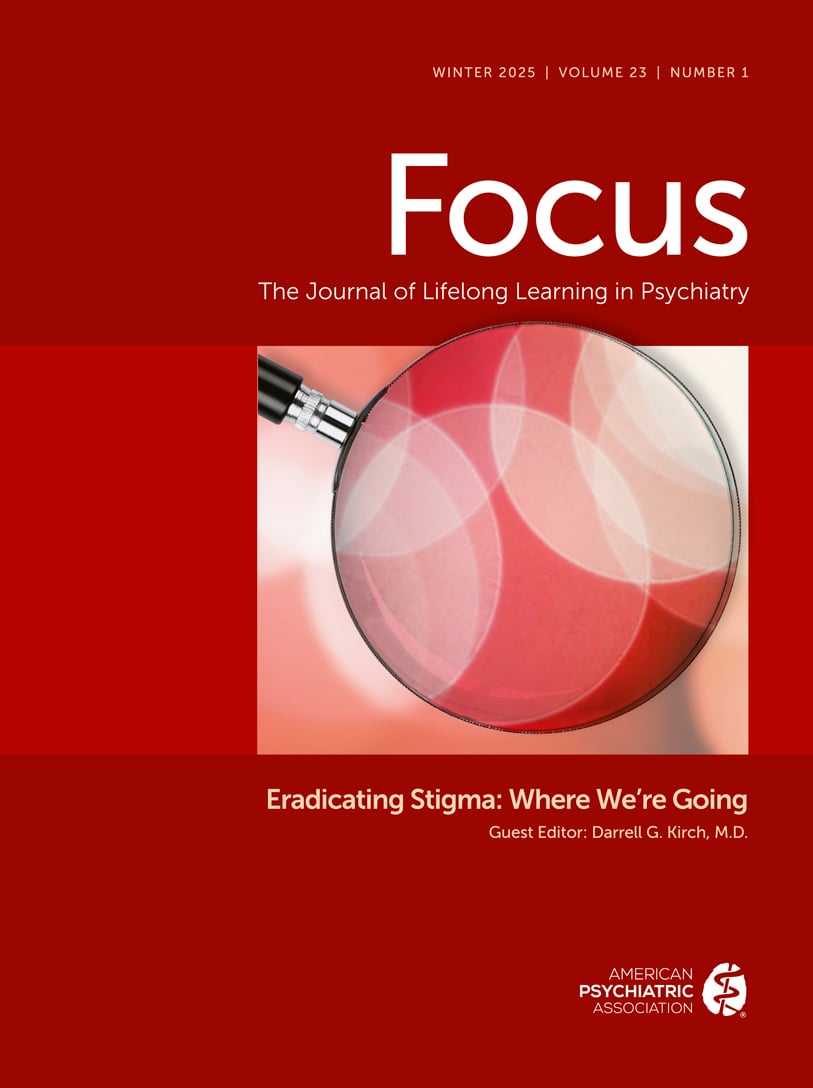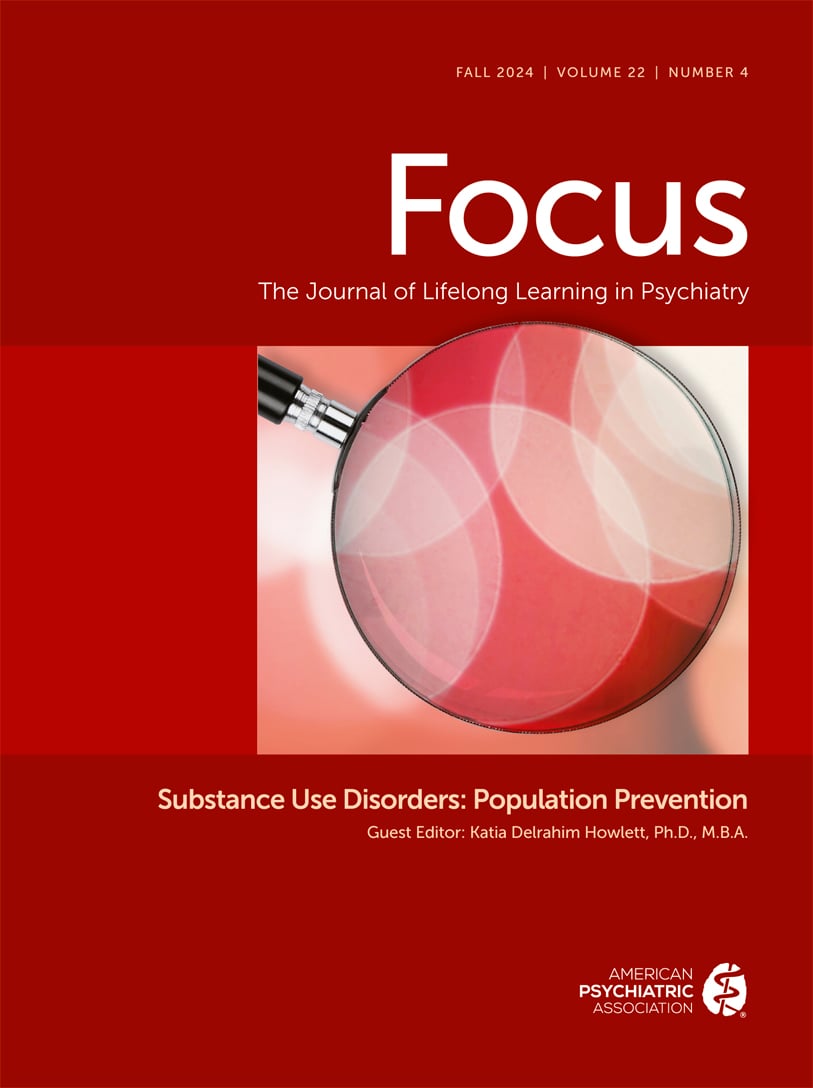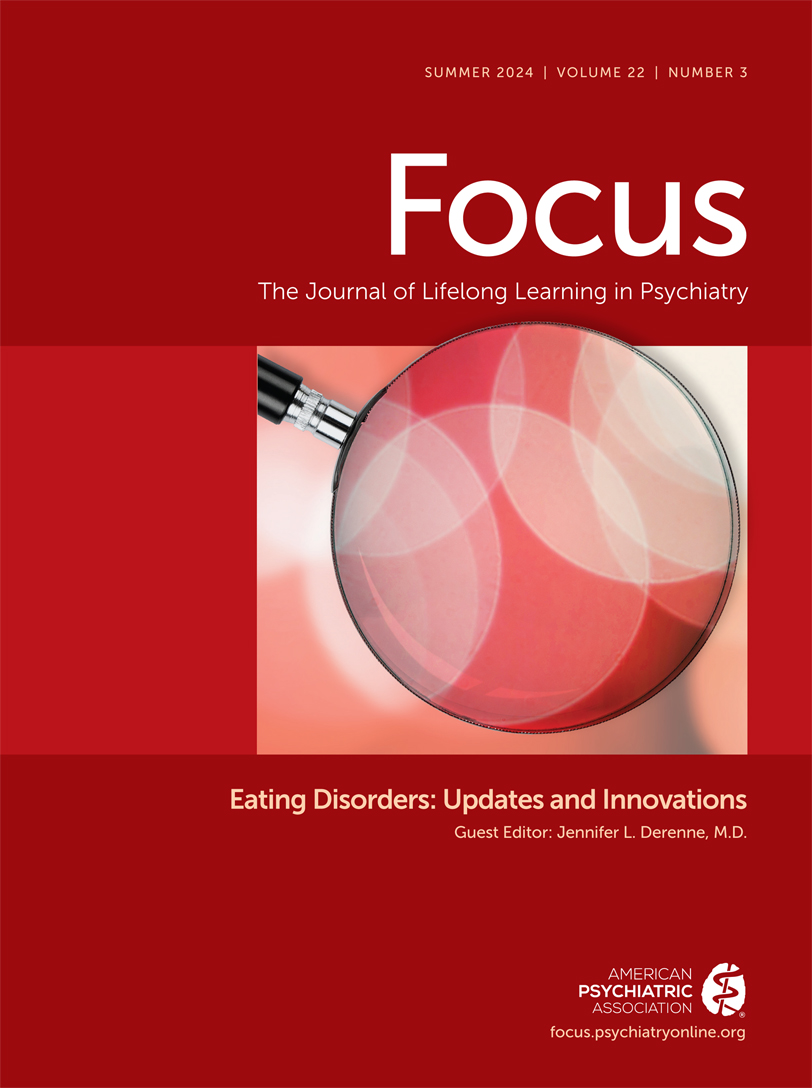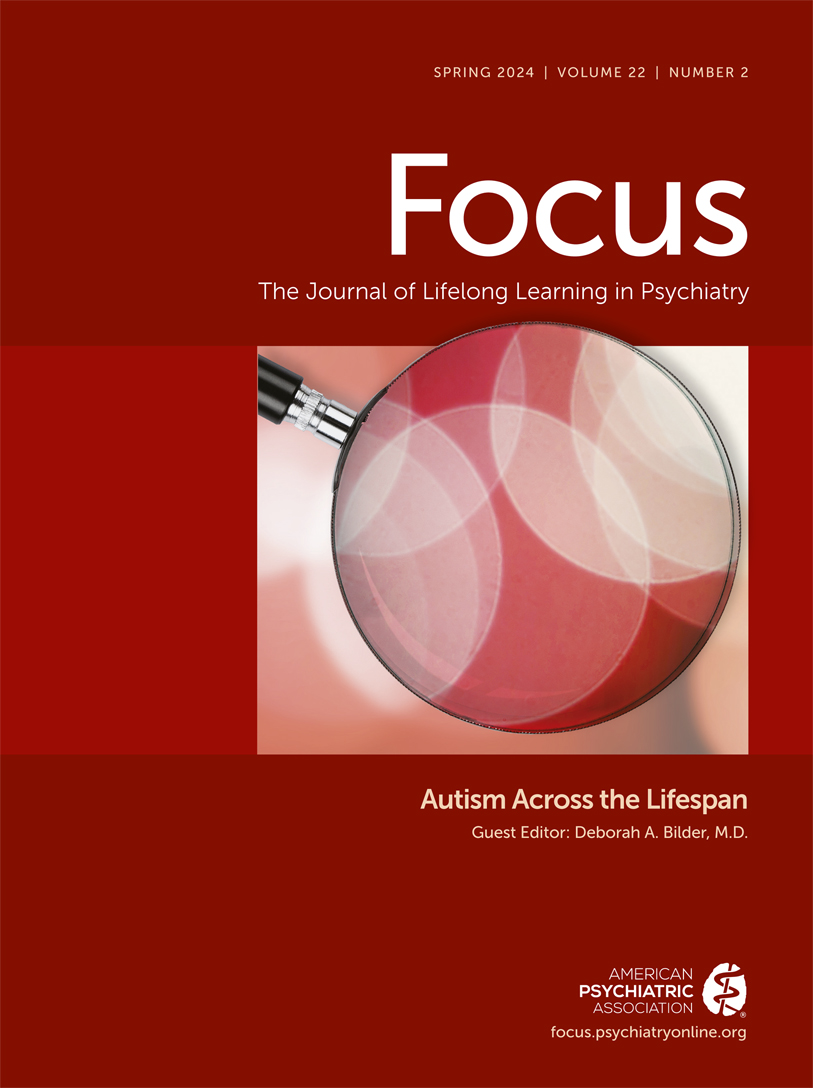Focus
- Volume 21
- Number 4
- October 2023
From the Guest Editor
Reviews
Publication date: 01 October 2023
Pages344–353Bipolar disorder is a complex and heterogeneous psychiatric condition that affects more than 2% of the population. The assessment and treatment of bipolar disorder can be a challenge for clinicians, given its clinical complexity and the rapidly changing ...
https://doi.org/10.1176/appi.focus.20230009Publication date: 01 October 2023
Pages354–362Despite its inclusion as a distinct entity in APA’s Diagnostic and Statistical Manual of Mental Disorders since 1994, bipolar II disorder remains a surprisingly neglected psychiatric condition. Understudied and underrecognized, bipolar II disorder is ...
https://doi.org/10.1176/appi.focus.20230015Publication date: 01 October 2023
Pages363–369Bipolar disorder is associated with cognitive deficits, which persist across mood states and affect functional outcomes. This article provides an overview of recent progress in measuring cognition in bipolar disorder and its implications for both research ...
https://doi.org/10.1176/appi.focus.20230012Publication date: 01 October 2023
Pages370–379The term older-age bipolar disorder (OABD) refers to patients with bipolar disorder who are ages 50 and older. Research findings suggest important differences, including the attenuation of manic symptoms with age and the occurrence of multiple somatic ...
https://doi.org/10.1176/appi.focus.20230010Publication date: 01 October 2023
Pages380–388Bipolar disorder is associated with a considerable risk of suicide, and this fact must be incorporated into management of all patients with the condition. This article highlights the importance of a more nuanced understanding of the factors associated ...
https://doi.org/10.1176/appi.focus.20230011Communication Commentary
Ethics Commentary
Bibliography
Abstracts
Influential Publications
Publication date: 01 October 2023
Pages402–411Background: Excess mortality is a critical hallmark of bipolar disorder (BD) due to co-occurring general medical disorders and especially from suicide. It is timely to review of the status of suicide in BD and to consider the possibility of limiting ...
https://doi.org/10.1176/appi.focus.23021025Publication date: 01 October 2023
Pages412–419Objectives: To build a one-year risk calculator (RC) to predict individualized risk for suicide attempt in early-onset bipolar disorder. Methods: Youth numbering 394 with bipolar disorder who completed ≥2 follow-up assessments (median follow-up length = 13.1 ...
https://doi.org/10.1176/appi.focus.23021023Publication date: 01 October 2023
Pages420–429Background: Clinical trials have demonstrated rapid antidepressant effects with intravenous (IV) ketamine for major depressive disorder, with relatively less research specifically for bipolar depression. Herein, we describe the real-world effectiveness of ...
https://doi.org/10.1176/appi.focus.23021022Publication date: 01 October 2023
Pages430–433Objectives: The authors compared the switch rate into hypomania/mania in depressed patients treated with second-generation antidepressants who had either bipolar I or bipolar II disorder. Methods: In a 10-week trial, 184 outpatients with bipolar depression (...
https://doi.org/10.1176/appi.focus.23021020Publication date: 01 October 2023
Pages434–443Background: Old age bipolar disorder has been an orphan of psychiatric research for a long time despite the fact that bipolar disorder (BD)-I and II together may affect 0.5–1.0% of the elderly. It is also unclear whether aetiology, course of illness and ...
https://doi.org/10.1176/appi.focus.23021024Publication date: 01 October 2023
Pages444–452Objectives: Persistent functional impairment is common in bipolar disorder (BD) and is influenced by a number of demographic, clinical, and cognitive features. The goal of this project was to estimate and compare the influence of key factors on community ...
https://doi.org/10.1176/appi.focus.23021021Past Issues
View Issues Archive
Vol. 23 | No. 1

Vol. 22 | No. 4

Vol. 22 | No. 3
